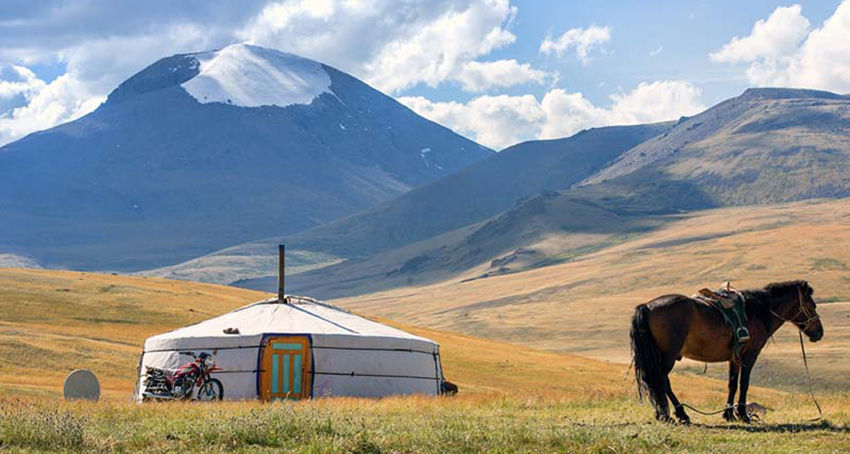The Mongolian Horse
- Wind of Mongolia
- Jul 19, 2024
- 3 min read
Mongolia, the Last Frontier of Adventure, a Nomadic Land Where the Horse Reigns Supreme
Genghis Khan said:
"It is easier to conquer the world on horseback than to govern one's country on foot."
The image conjured by the media, of verdant steppes dotted with white yurts, surrounded by livestock and galloping herds of horses across the vast expanses, is a reality in Mongolia.
The horse is omnipresent there and represents a significant part of Mongolian identity.
It is at the heart of an entire civilization. The great Khan made famous the Mongol cavalry armies across the continent and the world.
The nomads are particularly proud of their horses, which play a crucial role in life on the steppes and in the nomadic way of life.

Mongolian horses are both gentle and wild; they are docile and sweet.
Horses are generally ridden starting at around 2 years old, and a rich ritual still surrounds the training process and the first ride of young horses.
Throughout the year, races are organized, with the most famous being the Nadaam races in July and the Tsagaan Saar races, which take place during the lunar new year in February.
Mongolians start riding horses at a very young age, and it is not uncommon to see young riders as young as 4 years old participating in races.


The mare also plays a very important role in Mongolian culture and is rarely used for riding.
The famous fermented mare's milk, or Aïrak, is involved in various rituals and is attributed with medicinal properties. Mares are only milked from spring through summer.
The ancestor of the Mongolian horse is the Takhi, more commonly known as the Przewalski's horse, which is identical to the rock paintings found in the caves of Niaux, Lascaux, and many others.
Paradoxically, the Takhi, this "original" horse as represented in the rock paintings, never truly disappeared from the Mongolian steppes but was on the brink of extinction until the reintroduction in the early 2000s of specimens from Europe.
The Przewalski's horse is the ancestor of today’s domestic horses; however, as a species, it has never been domesticated and remains the last true wild horse.
The name Przewalski comes from Colonel Nikolai Przewalski, a Russian explorer who observed the horse in the Gobi Desert in 1879 and later identified it as a species unknown to Western scientists.

The "Foundation for the Preservation and Protection of the Przewalski Horse," established in the Netherlands in 1977, brought the first animals to Mongolia in 1992, into the Hustai National Park. By 2004, 84 animals had been released. The animals brought to Mongolia initially went through a rather long acclimatization period in large enclosures before being permanently released. By 2008, this population had grown to 192 individuals in 24 harems, and 3 stallions were transferred from Hustai National Park to Takhin Tal in the Gobi in 2007, where there were just over 100 horses in the wild, spread across nine groups.
True to its ancestor, the Mongolian horse resembles a small pony, standing about 1.50 meters at the withers. It is both revered and used as a working animal. Mongols do not give names to their horses, but the Mongolian language has an incredibly rich vocabulary for describing horses, including terms for their color, character, size, etc.
Due to its build, the Mongolian horse's trot remains moderate, but it is capable of trotting for long hours across the steppe and is well-suited for trekking, even under difficult conditions. No horses are shod in the summer; only ice shoes are used in winter in certain regions, such as around Lake Khuvsgul, where horses are also used to pull sleds.
Horses used for packing are quieter and more stocky, typically carrying loads of 80-100 kg. Although packing is widely used in Mongolia, Mongols generally do not use bags, but instead attach the load directly to their saddles.
Despite a rich history of equestrian exploits, Mongolian gear remains largely simple and unsophisticated. However, the saddle has remained very famous since the great era of the Mongol Empire.



Comments